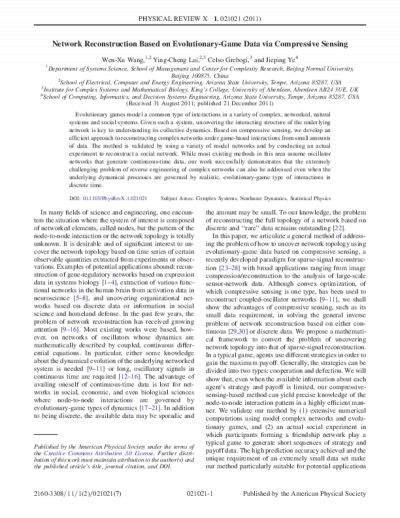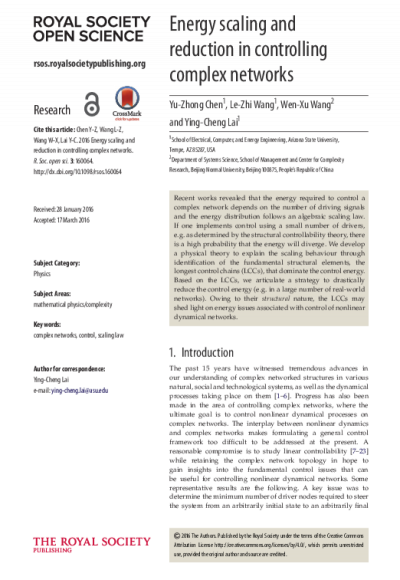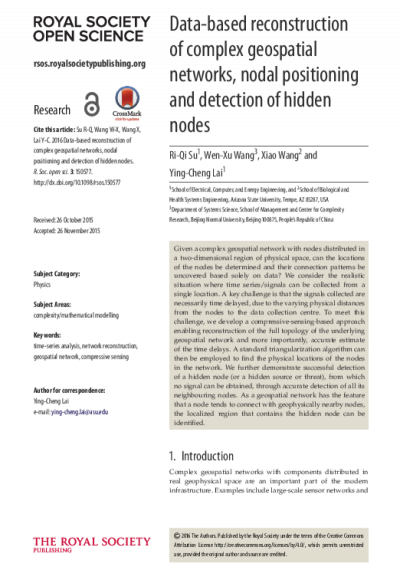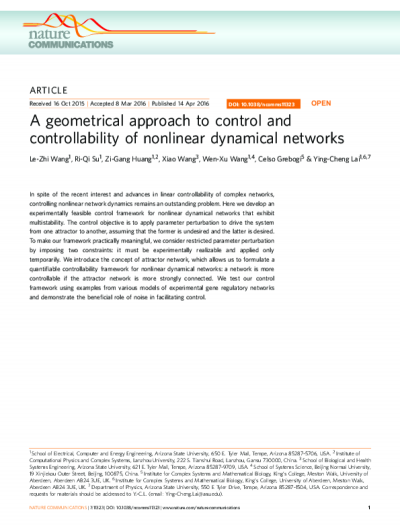Network Reconstruction Based on Evolutionary-Game Data Via Compressive Sensing

Evolutionary games model a common type of interactions in a variety of complex, networked, natural systems and social systems. Given such a system, uncovering the interacting structure of the underlying network is key to understanding its collective dynamics. Based on compressive sensing, we develop an efficient approach to reconstructing complex networks under game-based interactions from small amounts of data. The method is validated by using a variety of model networks and by conducting an actual experiment to reconstruct a social network. While most existing methods in this area assume oscillator networks that generate continuous-time data, our work successfully demonstrates that the extremely challenging problem of reverse engineering of complex networks can also be addressed even when the underlying dynamical processes are governed by realistic, evolutionary-game type of interactions in discrete time.
- Author (aut): Wang, Wen-Xu
- Author (aut): Lai, Ying-Cheng
- Author (aut): Grebogi, Celso
- Author (aut): Ye, Jieping
- Contributor (ctb): Ira A. Fulton Schools of Engineering







